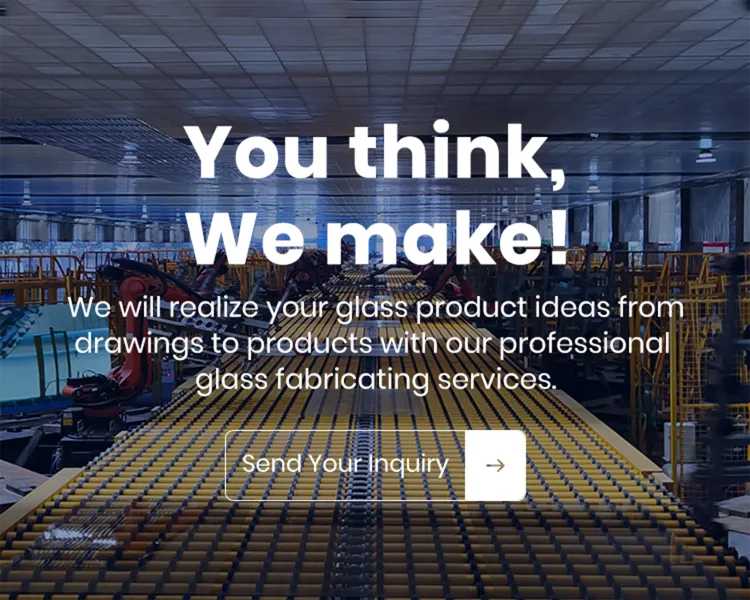Nov . 30, 2024 09:10 Back to list
Techniques for Sandblasting Tempered Glass for Enhanced Aesthetic and Durability
The Process and Benefits of Sandblasting Tempered Glass
Sandblasting, a widely used technique in the glass industry, involves propelling fine particles at high velocity onto the surface of glass, resulting in a frosted or etched appearance. When applied to tempered glass, sandblasting offers both aesthetic and functional advantages, making it a favored choice in architectural designs and artistic applications.
Understanding Tempered Glass
Tempered glass, also known as toughened glass, is thermally treated to improve its strength and thermal resistance. This process involves heating the glass to its softening point and then rapidly cooling it. The result is a material that is significantly stronger than regular glass, able to withstand high levels of stress and thermal shock. This durability makes tempered glass a preferred material in environments prone to impacts or extreme temperature variations.
The Sandblasting Process
The sandblasting process itself is relatively straightforward but requires skilled technicians to ensure consistency and quality. Initially, the tempered glass surface is prepared and cleaned to remove any contaminants. Next, a sandblasting machine sprays a mixture of air and abrasive materials, such as silica sand or aluminum oxide, onto the glass surface. The pressure and angle of the blast can be adjusted to achieve varying textures and levels of opacity. After the sandblasting is complete, the glass is thoroughly cleaned to remove any remaining abrasive particles.
Artistic and Functional Applications
One of the prime reasons for sandblasting tempered glass is its versatility in design. Sandblasting can create intricate patterns, logos, or even images on glass surfaces, transforming simple panes into stunning focal points in residential or commercial spaces. This technique is commonly used in creating decorative partitions, shower doors, windows, and glass facades.
sandblasting tempered glass

In addition to aesthetics, sandblasted tempered glass provides functional benefits. The frosted surface can reduce glare and improve privacy without sacrificing natural light. This feature is particularly advantageous for office buildings where transparency is desirable, yet confidentiality must be maintained. Moreover, sandblasted finishes can add a layer of safety, as the textured surface can deter fingerprints and smudges, ensuring an easier maintenance regime compared to clear glass.
Safety Considerations
The safety characteristics of tempered glass are further enhanced by the sandblasting process. In the event of breakage, tempered glass shatters into small, blunt pieces rather than sharp shards, minimizing injury risks. This makes it an ideal choice for public spaces, residential installations, and areas prone to accidents. Sandblasting, therefore, not only beautifies the glass but also contributes to safety standards.
Environmental Impact
As with any industrial process, the environmental implications of sandblasting should be considered. The use of non-toxic and reusable abrasives can mitigate environmental harm. Additionally, many companies are now embracing sustainable practices by recycling used abrasives and ensuring minimal waste during the sandblasting process.
Conclusion
In conclusion, sandblasting tempered glass represents a harmonious blend of strength, beauty, and functionality. As architects and designers seek innovative ways to enhance spaces, the sandblasted finish on tempered glass stands out for its ability to marry artistic expression with practical performance. From residential uses to commercial implementations, the varied applications of sandblasted tempered glass are numerous, reflecting a growing trend towards combining form and function in modern design. This process not only elevates the visual appeal of glass but also maintains the resilience required for everyday use, ensuring that it remains a relevant choice in both contemporary and traditional designs. It's clear that sandblasting tempered glass is not merely about aesthetics; it’s about enhancing the overall experience of space through thoughtful design solutions.
-
Safety and Style with Premium Laminated Glass Solutions
NewsJun.24,2025
-
Reinvents Security with Premium Wired Glass
NewsJun.24,2025
-
Premium Float Glass Line for Modern Architecture
NewsJun.24,2025
-
Low Emissivity Glass for Energy-Efficient Architecture
NewsJun.24,2025
-
High-Performance Insulated Glass Solutions for Modern Architecture
NewsJun.24,2025
-
Elevates Interior Style with Premium Silver Mirror
NewsJun.24,2025
Related PRODUCTS














